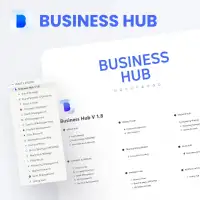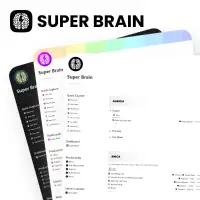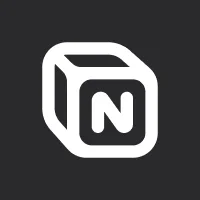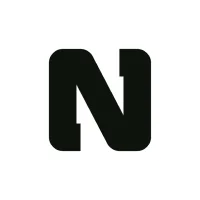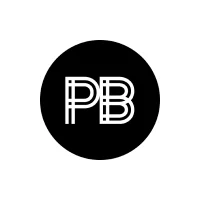How to Build Your Personal Brand on LinkedIn – Optimize Your Profile Like a Pro
In a world where professional networking and personal branding are increasingly vital, LinkedIn has emerged as the platform of choice for individuals looking to connect, share insights, and build a compelling personal brand. Your LinkedIn profile is no longer just an online resume; it’s your digital persona and a powerful tool for networking, career growth, and personal branding.
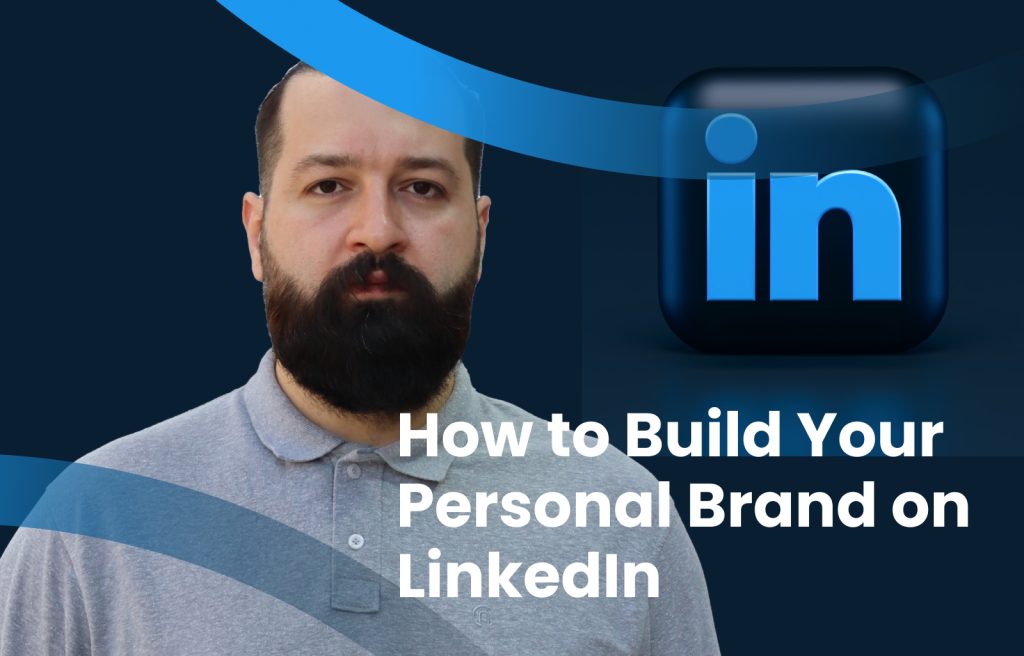
The Power of Personal Branding on LinkedIn
In today’s competitive professional landscape, personal branding is a game-changer. It’s the process of strategically managing your online presence to shape public perception and position yourself as an authority in your field. On LinkedIn, your personal brand is your unique identity, your professional story, and the value you bring to your network and potential employers or clients.
Your LinkedIn profile serves as the hub for your personal brand. It’s where you showcase your skills, share your accomplishments, and engage with a global audience of professionals. When done right, personal branding on LinkedIn can open doors, foster valuable relationships, and create opportunities that align with your career goals.
The Importance of an Optimized Profile
An optimized LinkedIn profile is like a well-tailored suit – it leaves a lasting impression. When someone lands on your profile, whether they’re a potential employer, client, or a professional peer, your profile should tell a compelling story about who you are and what you bring to the table.
An incomplete or outdated profile may leave you overlooked, while a well-optimized one can make you stand out and capture opportunities. An optimized profile not only attracts more profile views and connection requests but also elevates your chances of getting job offers, partnership proposals, or speaking invitations.
Your LinkedIn profile is your personal brand’s digital storefront, and like any successful store, it should be engaging, authentic, and optimized for its target audience. This guide will walk you through the key steps to unlock the power of personal branding on LinkedIn and provide insights on optimizing your LinkedIn profile to make a lasting impact in the professional world. Whether you’re just getting started or looking to revamp your existing profile, we’ve got you covered with expert strategies and tips to help you shine on LinkedIn.
Setting the Stage: Crafting a Standout Headline and Photo
Your LinkedIn headline and profile photo are the first things people notice on your profile. They create the initial impression that can make or break the engagement with your audience. In this section, we’ll delve into the strategies and techniques to craft a standout headline and choose the right profile photo that exudes professionalism and personality.

Choosing the Right Profile Photo
Your LinkedIn profile photo is more than just a visual representation; it’s a key element of your personal brand. Here’s what you need to know:
1. Professionalism Matters: Opt for a high-quality, professionally taken headshot. Dress as you would for work, and choose a background that’s uncluttered and professional.
2. The Power of a Smile: A genuine smile can make you appear more approachable and friendly. Choose a photo where you look approachable and ready to connect.
3. Eye Contact: Maintain eye contact with the camera to create a sense of connection. It conveys confidence and trustworthiness.
4. Consistency: Use a profile photo that matches your image across other professional platforms. Consistency in your digital presence is crucial for personal branding.
5. Avoid Selfies: While selfies are fine for personal social media, LinkedIn calls for a more polished image. Invest in a professional photo to stand out.
Crafting a Compelling Headline
Your LinkedIn headline is your digital elevator pitch. It’s the first piece of information people see after your name, and it should offer a glimpse of your professional identity. Here’s how to craft a compelling headline:
1. Keep It Professional: Your headline should convey professionalism. While you can add creativity, avoid overly casual or humorous language, unless it’s aligned with your industry.
2. Include Keywords: Use relevant keywords in your headline. This will improve your visibility when others search for professionals with specific skills or experience.
3. Highlight Your Unique Selling Proposition (USP): Your headline is the ideal place to convey what makes you unique. Highlight your skills, expertise, or achievements that set you apart from others in your field.
4. Think About Your Target Audience: Consider who your ideal audience is, and tailor your headline to attract them. For example, if you’re looking for job opportunities, focus on your job title and key skills.
5. Use Vertical Bars or Pipes: To break up your headline and make it more reader-friendly, consider using vertical bars or pipes (|) to separate different elements.
Examples of Effective Headlines
Here are some examples of effective LinkedIn headlines to inspire your own:
- “Digital Marketing Strategist | SEO Specialist | Helping Businesses Reach the Top of Search Rankings”
- “Experienced Graphic Designer | Transforming Ideas into Stunning Visuals | Open to New Collaborations”
- “Project Manager | PMP Certified | Leading Teams to Successful Deliveries | Open for Networking”
- “Passionate Environmental Activist | Creating a Sustainable Future | Connecting with Like-minded Changemakers”
- “Data Scientist | Turning Data into Insights | Using Analytics to Drive Business Growth”
By now, you’ll understand the significance of a professional profile photo and how to craft a compelling headline that speaks to your unique professional identity. These two elements are the first building blocks of your LinkedIn profile and will set the stage for a successful personal brand on the platform.
Crafting Your Compelling Summary
Your LinkedIn summary is your opportunity to narrate your professional story and showcase your personality. In this section, we’ll explore the pivotal role the summary plays in personal branding, offer tips for writing an engaging summary, and guide you in showcasing your unique selling proposition (USP).
The Summary’s Role in Personal Branding
1. Elevating Your Professional Story: Your LinkedIn summary is where you can go beyond your work history and delve into your professional journey. It’s your personal brand’s narrative.
2. The Power of First Impressions: Many visitors to your LinkedIn profile may not scroll beyond your summary. This makes it a vital element in shaping your online image.
3. Conveying Your Values: Your summary can also express your values, passions, and what you stand for professionally. This humanizes your profile and helps in building a deeper connection with your audience.
Tips for Writing an Engaging Summary
1. Start with a Hook: Begin your summary with an attention-grabbing hook. This could be a personal anecdote, a thought-provoking question, or a bold statement about your professional journey.
2. Keep It Concise: While your summary allows up to 2,000 characters, aim for conciseness. Use short paragraphs and bullet points for easy reading.
3. Tell Your Story: Share your professional journey, including key milestones, experiences, and how they’ve shaped you. Make it relatable and engaging.
4. Use Active Voice: Write in an active, first-person voice. This helps create a direct connection with your audience.
5. Highlight Achievements: Showcase your achievements and skills, but do so humbly. Let your accomplishments speak for themselves.
6. Be Authentic: Authenticity is key to personal branding. Be yourself in your writing. It helps in building trust.
7. Address Your Target Audience: Think about who you want to connect with on LinkedIn and tailor your summary accordingly. Address their needs and interests.
8. Include a Call to Action: At the end of your summary, invite readers to connect, message you, or visit your website or portfolio. This prompts engagement.
Showcasing Your Unique Selling Proposition (USP)
1. Define Your USP: Your Unique Selling Proposition is what sets you apart from others in your field. It’s what makes you unique. Define it clearly in your summary.
2. Focus on Benefits: Explain how your USP benefits your audience or potential employers. What value do you bring to the table?
3. Be Specific: Use concrete examples or anecdotes to illustrate your USP. This makes it more tangible and memorable.
4. Use Keywords: Incorporate relevant keywords into your summary to improve your discoverability on LinkedIn.
5. Share Your Vision: If your USP aligns with a particular vision for your industry or profession, mention it. This can be powerful in attracting like-minded connections.
By now, you’ll understand the significance of your LinkedIn summary in personal branding. You’ll also have the tools and strategies to write an engaging and authentic summary that tells your professional story, highlights your achievements, and showcases your unique selling proposition. Your summary will become a powerful asset in shaping your online identity.
Perfecting Your Experience Section
Your experience section is the heart of your LinkedIn profile, where you highlight your professional journey. In this section, we’ll delve into how to effectively showcase your professional accomplishments, optimize your job descriptions, and incorporate keywords for increased visibility.
Showcasing Professional Accomplishments
1. Highlight Relevant Experience: Tailor your experience section to your personal brand. Showcase positions and roles that align with your career goals and aspirations.
2. Use Metrics: Where possible, quantify your accomplishments. Numbers, percentages, and specific data provide concrete evidence of your contributions.
3. Describe Impact: Focus on the impact you’ve made in your roles. How did your work benefit your company, clients, or team? Use action verbs to convey your achievements.
4. Be Selective: You don’t need to list every job you’ve ever had. Highlight the positions that are most relevant to your current professional objectives.
5. Include Awards and Honors: If you’ve received awards, recognitions, or certifications related to your roles, make sure to mention them.
Optimizing Your Job Descriptions
1. Be Descriptive: When describing your roles, provide context. Explain the scope of your responsibilities and the challenges you faced.
2. Focus on Skills: Emphasize the skills you acquired or improved in each position. Highlighting your skill development can make your profile more attractive to potential employers.
3. Tell a Story: Use storytelling techniques to make your job descriptions engaging. Share challenges you’ve overcome, projects you’re proud of, or lessons you’ve learned.
4. Use Bullets: Bulleted lists make your job descriptions easier to scan, which is important since many visitors won’t read every word.
5. Add Multimedia: LinkedIn allows you to include media such as links, images, or documents in your job descriptions. Use this feature to visually enhance your accomplishments.
Incorporating Keywords for Visibility
1. Research Keywords: To improve your visibility on LinkedIn and beyond, research industry-specific keywords and phrases that are relevant to your profession.
2. Strategic Placement: Incorporate these keywords naturally into your job descriptions, skills section, and summary. Don’t overdo it; aim for a smooth flow.
3. Use Synonyms: To capture a broader audience, include synonyms or variations of keywords where appropriate.
4. Be Specific: Generic keywords won’t set you apart. Opt for specific terms that relate to your niche or specialization.
5. Regularly Update: The professional landscape changes, and so do the keywords associated with it. Regularly update your profile to reflect current trends and buzzwords.
By the end of this section, your LinkedIn experience section will not only present your professional journey but also reflect your personal brand. It will effectively showcase your accomplishments, provide engaging job descriptions, and incorporate relevant keywords to boost your visibility. Your experience section will become a powerful tool for attracting connections, job opportunities, and professional growth.
Building a Network of Influence
In the ever-connected world of LinkedIn, building a robust network of influence is key to enhancing your personal brand. This section explores strategies for connecting with industry professionals, engaging with thought leaders, and effective outreach methods.
Connecting with Industry Professionals
- Start with Colleagues: Begin by connecting with colleagues from your current and previous workplaces. These connections are the foundation of your professional network.
- Alumni Associations: If you’re an alum of any institution, join the LinkedIn groups associated with your school or university. Alumni networks are excellent places to find like-minded professionals.
- Industry Peers: Seek out others in your industry or profession. These individuals can provide insights, advice, and potential opportunities for collaboration.
- Attend Conferences: After attending industry conferences or events, connect with fellow attendees on LinkedIn. It’s a great way to maintain those valuable networking connections.
- Connect with Recruiters: Recruiters often look for potential candidates on LinkedIn. Building connections with them can lead to exciting career prospects.
Engaging with Thought Leaders
1. Follow Influencers: Identify thought leaders and industry influencers relevant to your profession. Follow them to receive their updates and insights on your feed.
2. Engage with Their Content: Comment on, like, and share their posts. Engaging with thought leaders’ content not only shows your support but also increases your visibility within their network.
3. Attend Webinars and Seminars: Many thought leaders host webinars, seminars, or online discussions. Participate in these events to learn from them directly and potentially connect.
4. Reach Out with a Personal Message: If you’ve had a particularly valuable experience with their content or advice, consider sending a personal message to express your appreciation and open the door for conversation.
Effective Outreach Strategies
- Personalized Connection Requests: When sending connection requests, don’t use the generic LinkedIn message. Craft a brief, personalized message that explains why you’d like to connect.
- Introduce Yourself: When connecting with someone you haven’t met before, introduce yourself briefly. Mention your profession, the common ground you share, or your mutual connections.
- Maintain Professionalism: Your outreach messages should maintain a professional tone. Avoid overly casual language or too many exclamation marks.
- Join and Participate in Groups: LinkedIn groups are excellent places to find like-minded professionals. Join groups related to your industry, and actively participate in discussions.
- Alumni and Company Pages: Consider following your university’s alumni page and the LinkedIn page of your current or former companies. These connections can lead to useful networking opportunities.
- Message Etiquette: When you reach out to connections or new prospects, ensure your messages are courteous, concise, and to the point. Avoid excessive sales pitches.
- Schedule Meetings: Once you’ve established a rapport with a connection, consider suggesting a virtual or in-person meeting to deepen your professional relationship.
Now, you’ll have the knowledge and strategies to grow a diverse network of influence on LinkedIn. This network can open doors to career opportunities, collaborative projects, and the exchange of knowledge that can significantly enhance your personal brand. Building your LinkedIn network is an investment in your professional growth and success.
Showcasing Your Skills and Expertise on LinkedIn
LinkedIn is a platform designed to showcase your professional skills and expertise. This section delves into how to add relevant skills to your profile, get endorsements, and the significance of recommendations in enhancing your personal brand.
Adding Relevant Skills to Your Profile
1. Skill Diversity: Begin by listing a variety of skills that reflect your professional competencies. These can range from technical skills to soft skills, depending on your industry and role.
2. Prioritize Skills: LinkedIn allows you to feature your top skills at the beginning of your list. Arrange them in order of importance and relevance to your personal brand.
3. Research Your Industry: Look at profiles of professionals in your industry or role to get a sense of which skills are most sought after and commonly listed. Tailor your skills to align with industry trends.
4. Keyword Optimization: Incorporate keywords in your skill list to improve your discoverability. Think about the terms recruiters or potential clients might search for.
Endorsing and Receiving Endorsements
1. The Endorsement Feature: LinkedIn provides a feature for connections to endorse your skills. This social proof of your abilities can significantly boost your personal brand.
2. Endorse Your Connections: One effective way to receive endorsements is by endorsing your connections’ skills first. This often leads to reciprocity.
3. Encourage Reciprocal Endorsements: Politely ask your connections to endorse the skills they’ve observed you demonstrate. Be specific about the skills you’d like them to endorse.
4. Showcase Your Skills: The number of endorsements each skill receives is visible on your profile. Skills with a higher number of endorsements stand out more, so encourage colleagues, mentors, and managers to endorse your key skills.
The Value of Recommendations
1. Request Recommendations: Recommendations are written testimonials from your connections, and they carry considerable weight. Approach colleagues, supervisors, or clients for recommendations that highlight your key strengths.
2. Be Specific: When requesting recommendations, be specific about what you’d like them to emphasize. Whether it’s your project management skills, teamwork, or leadership, clear guidance ensures your recommendations align with your personal brand.
3. Showcase a Range of Relationships: Recommendations from a variety of professional relationships provide a well-rounded view of your expertise. Consider asking for recommendations from supervisors, peers, and clients.
4. Give to Receive: Write recommendations for your connections, and they’re more likely to reciprocate. Your own recommendations showcase your ability to assess and appreciate others’ skills.
5. Curate Your Recommendations: LinkedIn allows you to select which recommendations to display on your profile. Choose recommendations that best align with your current career goals and personal brand.
Now, you’ll be well-versed in leveraging LinkedIn’s skills and endorsements features to portray your expertise and establish your professional brand. Your profile will not only reflect your competencies but also the social proof of your skills through endorsements and recommendations. These elements combined will boost your credibility and visibility on the platform.
Publishing Valuable Content on LinkedIn
One of the most effective ways to optimize your LinkedIn profile for personal branding is by sharing valuable content. This section explores the art of sharing thought leadership content, writing articles and posts, and engaging with comments and conversations to position yourself as an industry expert.
Sharing Thought Leadership Content
1. Why Thought Leadership Matters: Thought leadership is about providing insights, knowledge, and innovative ideas in your field. Sharing thought leadership content on LinkedIn showcases your expertise, establishes credibility, and attracts a following.
2. Content Types: Thought leadership content can take various forms, including infographics, reports, whitepapers, videos, webinars, and more. Choose content formats that align with your personal brand and resonate with your target audience.
3. Consistency is Key: Regularly share thought leadership content to stay on your connections’ radar and establish a reputation as an expert. Create a content calendar to maintain consistency.
4. Sharing Existing Content: You don’t have to create all your content from scratch. Share relevant articles, studies, and reports from reputable sources, adding your insights or opinions to the post.
5. Customize Content for LinkedIn: While cross-posting is common, it’s essential to customize content for LinkedIn. Craft posts that cater to your LinkedIn audience and consider their specific needs and interests.
Writing Articles and Posts
1. LinkedIn Articles: Publishing long-form articles on LinkedIn is an excellent way to dive deeper into topics relevant to your industry. Articles showcase your thought leadership, and LinkedIn’s algorithm often prioritizes this type of content.
2. Article Structure: Structured articles with clear headings, subheadings, bullet points, and visuals are more engaging and scannable. Use these formatting elements to make your articles reader-friendly.
3. Post Updates: LinkedIn posts are shorter, more frequent updates that keep your network informed about your activities, thoughts, and achievements. Use posts to provide quick insights, share industry news, or celebrate milestones.
4. Content Variety: Create a mix of content, including how-to guides, case studies, opinion pieces, and success stories. The diversity keeps your audience engaged and showcases your versatility.
Engaging with Comments and Conversations
1. Active Engagement: Personal branding isn’t just about broadcasting your expertise; it’s also about engaging with your audience. Respond to comments on your posts and articles. Thank people for sharing your content and express gratitude for their engagement.
2. Join Conversations: Participate in relevant discussions within your LinkedIn network. Share your insights, answer questions, and provide valuable input. This active involvement will help you connect with your audience and boost your visibility.
3. Thoughtful Responses: When engaging in conversations, prioritize thoughtful and meaningful responses over quantity. Quality interactions demonstrate your depth of knowledge and genuine interest in your field.
4. Connect and Network: If someone provides insightful comments or has valuable input on your posts, consider connecting with them. Expanding your network with like-minded professionals can enhance your personal brand and open doors for collaboration.
5. Moderation and Etiquette: Maintain a respectful and professional tone in your comments and conversations. Remember that your interactions are part of your personal brand’s public image.
By now, you’ll have a comprehensive understanding of how to leverage content sharing, article writing, and active engagement to enhance your personal brand on LinkedIn. Publishing and engaging with valuable content not only showcase your expertise but also help you connect with your audience on a deeper level.
The Importance of Recommendations and Endorsements
LinkedIn’s recommendations and endorsements are powerful tools for enhancing your personal brand and credibility on the platform. In this section, we’ll delve into the significance of recommendations and endorsements, how to request and give them, and how they contribute to building your professional reputation.
Requesting and Giving Recommendations
1. The Power of Recommendations: Recommendations are personalized testimonials from colleagues, supervisors, or business partners. They carry a significant weight as they provide firsthand accounts of your skills, work ethic, and character.
2. Strategically Requesting Recommendations: When asking for recommendations, target individuals who have worked closely with you and can speak to your abilities. Send personalized requests that outline specific achievements or projects you’d like them to highlight.
3. Offering Reciprocal Recommendations: A mutually beneficial approach is to offer to write a recommendation for your connection in return. This reciprocity can help you receive more recommendations while contributing to the LinkedIn community’s positive atmosphere.
4. Highlighting Diversity: Aim to gather recommendations from diverse sources. Recommendations from colleagues, managers, clients, and business partners demonstrate your versatility and the positive impact you’ve had on various professional relationships.
5. Maintain Recommendations Over Time: Continue to collect recommendations as you advance in your career and take on new challenges. An updated and comprehensive list of recommendations highlights your ongoing growth and expertise.
Building Credibility with Endorsements
1. The Role of Endorsements: Endorsements are a way for your connections to vouch for your specific skills and competencies. While they are less detailed than recommendations, they still contribute to your overall credibility.
2. Curating Your Skills: Select and display your top skills prominently on your profile. These skills are the ones you want to be endorsed for and are key to your personal brand. You can have up to 50 skills on your profile.
3. Endorsing Others: Actively endorse your connections for skills you genuinely believe they possess. This not only strengthens your professional relationships but often leads to reciprocated endorsements.
4. Validating and Updating: Periodically validate and update your connections’ skills and endorse new ones. This simple action keeps your profile dynamic and your endorsements relevant to your current expertise.
5. Positioning Your Top Skills: Arrange your endorsed skills so that the most important and relevant ones are at the top. The first few skills receive more attention and can serve as a quick summary of your professional strengths.
6. Quantity vs. Quality: While quantity of endorsements is good, quality is even more important. A high number of endorsements for a specific skill can indicate a strong and consistent proficiency in that area.
By the end of this section, you’ll understand the importance of both recommendations and endorsements in personal branding on LinkedIn. You’ll have the knowledge and strategies to effectively request, give, and curate these endorsements to build your professional credibility and reputation.
LinkedIn Personal Branding Case Studies
We’ll take a deep dive into real-life examples of successful LinkedIn profiles. By analyzing these personal branding case studies, you’ll gain valuable insights into what works on the platform and learn from the experts in leveraging LinkedIn for personal branding.
Real-Life Examples of Successful LinkedIn Profiles
- Elon Musk – The Visionary Entrepreneur: Elon Musk, CEO of SpaceX and Tesla, has a LinkedIn profile that reflects his visionary and ambitious approach. His profile showcases his achievements, ranging from electric cars to space exploration. Musk’s LinkedIn presence demonstrates how to use the platform to highlight a remarkable career and ambitious future goals.
- Sheryl Sandberg – The Inspirational Leader: Sheryl Sandberg, COO of Facebook, is renowned for her leadership and advocacy for women in the workplace. Her LinkedIn profile not only outlines her impressive career but also emphasizes her dedication to empowering women in business. Her example illustrates the power of aligning personal values with professional branding.
- Richard Branson – The Charismatic Brand Builder: Richard Branson, the founder of Virgin Group, uses LinkedIn to showcase his charismatic and approachable personality. His profile is filled with engaging content, from captivating images to insightful articles. Branson’s LinkedIn presence demonstrates how to use storytelling and charisma to build a personal brand.
- Melinda Gates – The Philanthropic Influencer: Melinda Gates, co-chair of the Bill and Melinda Gates Foundation, focuses on her philanthropic endeavors on LinkedIn. Her profile highlights her work in global health and gender equality, showcasing how to use LinkedIn to promote a cause and inspire change.
What We Can Learn from the Experts
- Authenticity is Key: All the successful LinkedIn profiles mentioned above share a common thread: authenticity. They stay true to their personal and professional values, and their profiles reflect their genuine selves.
- Storytelling Matters: Effective storytelling is a powerful tool for personal branding. These experts use their profiles to tell their stories, whether it’s their journey as entrepreneurs, their commitment to social causes, or their charismatic adventures.
- Alignment with Values: Personal branding on LinkedIn should align with your values and passions. Whether it’s technology, leadership, entrepreneurship, or philanthropy, your profile should reflect what you genuinely care about.
- Engagement and Interaction: These professionals don’t treat LinkedIn as a one-way communication channel. They actively engage with their connections, respond to comments, and initiate discussions.
- Content Quality: High-quality content, whether it’s in the form of articles, posts, or images, enhances your profile’s attractiveness. Share insightful content that resonates with your audience.
- Consistency: Consistency in posting, messaging, and interaction is vital. These profiles maintain a consistent presence on LinkedIn, which is essential for personal branding.
By studying these personal branding case studies, you’ll gain valuable insights into how to optimize your LinkedIn profile for personal branding success. The strategies and approaches used by these experts serve as a blueprint for building a strong professional presence on the platform.
Managing and Monitoring Your LinkedIn Profile
Your LinkedIn journey doesn’t end with creating an optimized profile. Regularly managing and monitoring your LinkedIn presence is key to maintaining and enhancing your personal brand. In this section, we’ll explore the crucial aspects of profile maintenance, performance measurement, and adapting your strategy over time.
Regular Profile Updates and Maintenance
1. Stay Current with Updates
Regularly update your LinkedIn profile to reflect your most recent achievements, job responsibilities, and projects. Keeping your information current not only provides an accurate representation of your professional journey but also signals to your network that you’re actively engaged.
2. Engage with Your Network
Don’t let your LinkedIn profile become a stagnant digital brochure. Engage with your connections by sharing updates, commenting on posts, and sending personalized messages. These interactions keep your network active and informed.
3. Skill and Endorsement Management
Review the skills and endorsements section of your profile. Ensure the listed skills align with your current expertise and endorsements reflect your capabilities. Request endorsements from colleagues or connections you’ve worked with recently.
4. LinkedIn Pulse
Use LinkedIn Pulse, the platform’s publishing feature, to share your thoughts, insights, and experiences. Regularly publishing articles or posts can help establish you as a thought leader in your industry.
Measuring the Impact of Your Profile
1. LinkedIn Analytics
LinkedIn offers an analytics dashboard that provides insights into your profile’s performance. You can track the views, engagement, and demographics of your profile visitors. Regularly check these analytics to understand what content resonates with your audience.
2. KPIs for Personal Branding
Establish key performance indicators (KPIs) specific to your personal branding goals. Track metrics such as profile views, connection requests, engagement on your content, and messages from recruiters or potential clients.
3. Google Yourself
Conduct a periodic Google search using your name to see how your LinkedIn profile ranks in search results. Ensuring your profile appears at the top of search results can enhance your online visibility.
Adjusting Your Strategy Over Time
1. Continuous Learning: The digital landscape is ever-evolving. Stay updated with the latest LinkedIn features, algorithm changes, and best practices. Continuous learning and adapting to platform updates can help you remain effective.
2. Alignment with Goals: Regularly revisit your personal branding goals. As your career and aspirations evolve, ensure that your LinkedIn strategy aligns with these changes.
3. Feedback and Network Insights: Pay attention to feedback from your network. Listen to what resonates with your audience and adapt your content and engagement strategies accordingly. You can also seek direct feedback from trusted connections.
4. Content Experimentation: Don’t be afraid to experiment with different types of content, posting schedules, and approaches. LinkedIn’s algorithms reward active users, so try various approaches to understand what works best for your audience.
By consistently managing, monitoring, and adjusting your LinkedIn profile, you’ll maintain a strong personal brand and keep your professional network engaged. This proactive approach ensures that your LinkedIn presence remains a valuable asset throughout your career, helping you achieve your personal branding objectives.
Beyond the Profile: Leveraging LinkedIn Features
Your LinkedIn journey doesn’t stop at optimizing your profile; the platform offers an array of features and tools that can enhance your personal branding efforts. In this section, we’ll explore how to leverage LinkedIn’s additional functionalities to further establish your professional presence.
Joining and Participating in Groups
1. The Value of LinkedIn Groups
LinkedIn hosts a vast array of groups, covering nearly every industry, niche, and interest. Joining relevant groups can connect you with like-minded professionals, foster discussions, and expand your network.
2. Selecting the Right Groups
Be selective when choosing which groups to join. Consider your professional goals and areas of interest. Focus on quality over quantity; actively participating in a few meaningful groups is more advantageous than joining numerous inactive ones.
3. Engage Actively
After joining, participate in group discussions, share your insights, and ask questions. This engagement not only positions you as a knowledgeable contributor but also expands your visibility within your chosen niche.
4. Creating Your Own Group
For advanced personal branding, consider creating your own LinkedIn group around a topic or industry you’re passionate about. Running a group establishes you as an authority and allows you to curate discussions.
Showcasing Your Work in the Portfolio Section
1. The Portfolio Section
LinkedIn’s portfolio section allows you to showcase your professional work, such as articles, projects, presentations, and media clips. Utilize this feature to provide tangible evidence of your skills and expertise.
2. Uploading Samples
Carefully select and upload samples that best represent your accomplishments. This might include links to published articles, images of projects, or videos of presentations. Ensure these samples align with your personal brand’s narrative.
3. Highlight Achievements
Each portfolio item should include a brief description highlighting the key achievements or relevance of the work. This provides context to visitors.
Using LinkedIn Articles for Deeper Insights
1. LinkedIn Articles
LinkedIn’s publishing platform, known as LinkedIn Articles, allows you to craft long-form content directly on the platform. Writing articles can be a powerful tool to showcase your knowledge and insights.
2. Thought Leadership
Share articles that delve deeper into your industry or area of expertise. Consider topics that are relevant to your personal brand and engage your network. Well-researched, thoughtful articles can establish you as a thought leader in your field.
3. Consistency Matters
If you choose to write articles, maintain a consistent publishing schedule. Regular content creation keeps your audience engaged and demonstrates your commitment to sharing valuable insights.
4. Leverage Visuals
Incorporate visuals such as images, charts, and infographics into your articles to make them more engaging and visually appealing.
By actively participating in groups, showcasing your work through the portfolio section, and utilizing LinkedIn Articles, you can expand your reach and deepen your connection with your network. These features offer unique opportunities to enhance your personal branding efforts and position yourself as an influential professional in your field.
Leveraging LinkedIn Premium for Personal Branding
In your pursuit of optimizing your personal brand on LinkedIn, you may consider LinkedIn Premium, a subscription service that provides a range of enhanced features and tools. This section will explore what LinkedIn Premium offers, its potential benefits for personal branding, and how to determine if it’s the right choice for you.
A Look at LinkedIn Premium Features
- InMail Credits: LinkedIn Premium provides you with InMail credits, which allow you to send direct messages to people you aren’t connected with. This feature can be invaluable for reaching out to potential mentors, collaborators, or clients.
- Advanced Search Filters: Premium users enjoy access to advanced search filters, enabling more precise searches for people, jobs, and companies. This can help you find relevant connections and opportunities more efficiently.
- Who’s Viewed Your Profile: LinkedIn Premium offers an expanded view of who has viewed your profile, providing insights into the types of professionals interested in your personal brand.
- Access to LinkedIn Learning: LinkedIn Premium subscribers can access LinkedIn Learning, an extensive library of courses and tutorials on various professional topics. This resource can help you enhance your skills and knowledge, further strengthening your personal brand.
- Profile Views Insights: Premium users can see how their profile views have trended over time. This information can help you gauge the effectiveness of your personal branding efforts.
Evaluating if LinkedIn Premium Is Right for You
- Your LinkedIn Goals: Start by considering your LinkedIn objectives. If you’re serious about expanding your network, reaching out to specific individuals, or job hunting, LinkedIn Premium might be a valuable investment.
- Your Budget: Evaluate your budget and determine if the cost of LinkedIn Premium aligns with your personal branding goals. Consider whether the features it offers justify the subscription fee.
- Trial Period: LinkedIn often offers a free trial of its Premium service. Take advantage of this trial to assess whether the Premium features are beneficial for your personal branding efforts.
- Commitment to Regular Use: LinkedIn Premium is most valuable when used consistently. If you’re committed to actively leveraging the features it provides, such as InMail credits and advanced search filters, it can be a worthwhile investment.
- The Competitive Landscape: Assess whether LinkedIn Premium offers unique advantages compared to the free version. If you believe that its tools, like InMail, will provide a competitive edge in your field, it may be worth subscribing.
- Network Growth: Consider how rapidly you wish to grow your LinkedIn network. If you have ambitious networking goals, LinkedIn Premium can help you connect with a more extensive and targeted audience.
- Job Seekers: If you’re actively job hunting, LinkedIn Premium provides additional visibility and communication tools that can be advantageous in a competitive job market.
Ultimately, the decision to invest in LinkedIn Premium depends on your specific personal branding goals, budget, and commitment to using the service’s features. Careful evaluation can help you determine whether it’s the right choice to enhance your personal brand on LinkedIn.
The Power of a Strong LinkedIn Profile
Wrapping up, your LinkedIn profile is a potent tool for shaping and promoting your personal brand. It’s your virtual business card, résumé, and networking platform all rolled into one. A strong LinkedIn profile allows you to stand out in your industry, connect with influential professionals, and create opportunities you might not have imagined. As you optimize your profile, you’re investing in the growth and success of your personal brand.
Next Steps in Building Your Personal Brand
After reading this comprehensive guide, you’re now equipped with the knowledge and strategies needed to optimize your LinkedIn profile for personal branding success. Your next steps involve putting this knowledge into action. Commit to enhancing your profile, crafting a compelling summary, showcasing your skills and expertise, and actively engaging with your network. Remember that personal branding is an ongoing journey, and your LinkedIn profile is a dynamic representation of your professional identity. As you build and evolve your personal brand, your LinkedIn profile will serve as a powerful anchor in your online presence.
Optimize Your LinkedIn Profiles
If you’re ready to take your personal branding to the next level, it’s time to optimize your LinkedIn profile. Start by revisiting your headline, summary, and experience sections. Update your skills and expertise, request recommendations, and begin sharing thought leadership content. Your LinkedIn profile is a reflection of your professional journey, and by making it the best it can be, you’ll enhance your visibility and credibility in your field.
Benefits of a Strong Personal Brand on LinkedIn
Building a strong personal brand on LinkedIn isn’t just about online networking; it’s about opening doors to new opportunities, partnerships, and personal growth. A robust personal brand can lead to career advancement, thought leadership recognition, and an expansive network of influential connections. It’s a journey of continuous improvement that can transform your professional life.
Free LinkedIn Profile Optimization Checklist
As a special bonus, we’ve created a LinkedIn Profile Optimization Checklist to guide you through the process of enhancing your LinkedIn profile. This checklist covers key areas, from your profile photo and headline to summary, experience, skills, and more. It serves as a practical tool to ensure you’re making the most of your LinkedIn profile as you embark on your personal branding journey.
Don’t miss the opportunity to leverage the power of LinkedIn for personal branding success. Optimize your profile, build a network of influence, and actively share your insights and expertise with your connections. Your journey to a stronger personal brand on LinkedIn starts now.

